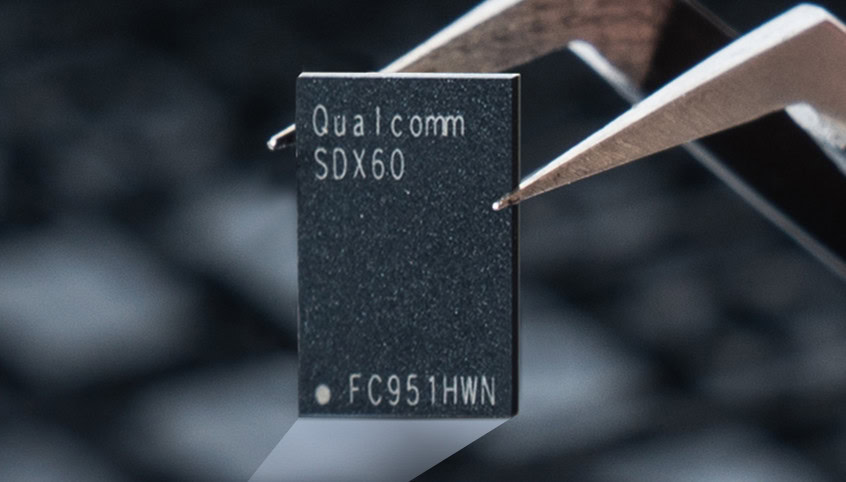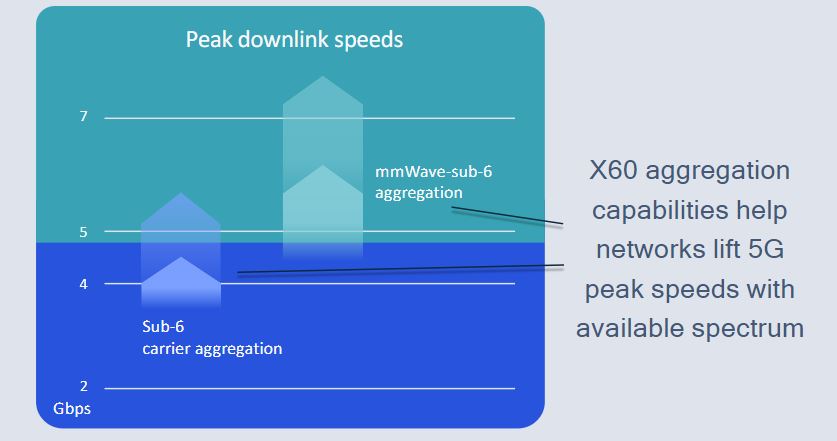Affiliate links on Android Authority may earn us a commission. Learn more.
What the Snapdragon X60 modem means for your next 5G phone

The switch to 5G technology requires new modems and other hardware, which isn’t such good news for our wallets. The first wave of 5G smartphones are already equipped with first and second-gen 5G modems, supporting new technologies like mmWave. To increase performance another step, Qualcomm has unveiled its third-generation Snapdragon X60 modem and radio front-end system for future smartphones.
In a nutshell, the Snapdragon X60 introduces high-quality 5G Voice-over-NR (VoNR) capabilities and enhanced carrier aggregation across sub-6GHz and mmWave technologies for faster speeds. Peak speeds cap out at 7.5Gbps download and 3Gbps upload. This is virtually unchanged from the Snapdragon X55, but the X60 should hit higher speeds more consistently on some networks thanks to improved carrier aggregation. Qualcomm has a video on the ins and outs of the new Snapdragon X60, which you can see below.
On the more technical side, the Snapdragon X60 features the world’s first FDD-TDD sub-6GHz carrier aggregation solution. In other words, data can be simultaneously received across FDD and TDD network bands. This is good news for carriers as they repurpose existing bands in the coming years, particularly those low-frequency LTE bands.
The X60’s support for sub-6GHz and mmWave aggregation is also a noteworthy step forward for peak data speeds. This allows networks to send data over a wider range of spectrum, improving capacity further as we edge closer to 5G standalone networks in the future. Equally as important, the Snapdragon X60 is designed for 5nm manufacturing, resulting in a smaller footprint and lower power consumption than before. The chip also retains dynamic spectrum sharing and FDD and TDD aggregation capabilities of its predecessor too.

In addition to modems, Qualcomm is now in the business of providing complete radio front-end (RF) solutions for its mobile customers. Muscling out its hardware competitors is potentially a very big earner for the company. The X60 now supports Qualcomm’s latest QTM535 mmWave module. It’s a thinner, more compact design than its QTM527 predecessor. This will lead to thinner 5G smartphones, leaving more room for much-needed battery capacity. The QTM535 supports 26GHz, 28GHz, and 39GHz mmWave bands.
Speaking of RF components, Qualcomm has also announced a breakthrough in its ultraSAW filter technology. With insertion loss down to just one decibel (dB), Qualcomm’s filter allows for better power efficiency and performance in the 600MHz to 2.7Ghz bands. This spectrum includes LTE and 5G bands, as well as Wi-Fi. Qualcomm claims it can do all this cheaper than its competitors, too.
The Snapdragon X60 modem and its associated RF components are expected to appear in premium-tier smartphones sometime in 2021. The parts will ship out to Qualcomm’s partners in the first quarter of 2020.